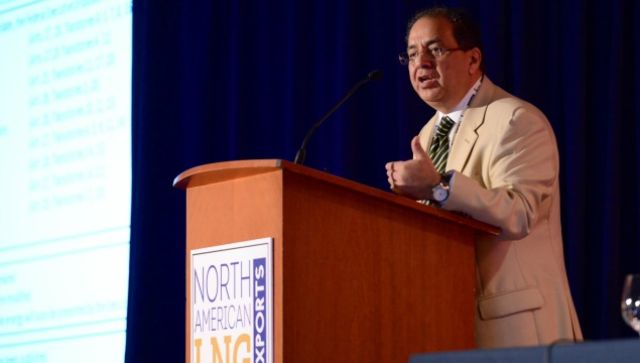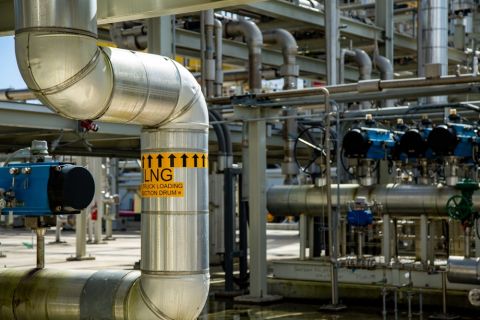
Javier Estrada, partner with Mexico-based Analitica Energetica, said Mexico is targeting natural gas production to increase to 8 billion cubic feet per day by 2018. Source: Hart Energy
Despite the trend of falling natural gas production and a deficiency of existing supply for industry and the power sector, Mexico is planning to construct two gas liquefaction plants with three existing regasification facilities being considered for conversion to export as well. These moves anticipate the additional supply to result from ongoing energy reform, and the price differential available in Asian energy markets, said Javier Estrada, partner with Mexicobased Analitica Energetica SC.
However, until reform rejuvenates investment in natural gas production, Mexico will have to rely on up to 5.5 billion cubic feet per day (Bcf/d) of imports from the U.S., he said.
Estrada, the immediate past director for energy planning and information with Mexico’s department of energy SENER, spoke at Hart Energy’s North America LNG Exports Conference.
In November, Pemex, the formerly state-owned oil and gas monopoly, announced it is planning a $6-billion investment to construct an LNG export facility at Salina Cruz, on the Pacific Coast and at the narrowest point of the Tehuantepec isthmus, with shipments aimed for Asia. A planned pipeline traversing the 120- mile isthmus would connect gas production offshore Gulf of Mexico and from southern Mexico to supply the plant. The project will have capacity of 250 million cubic feet per day, with first delivery expected in 2020.
Another LNG plant proposed in Topolobampo, further north, would primarily supply the Baja California peninsula with natural gas to replace the fuel oil and diesel currently used for power generation.
Three other existing regasification plants—Altamira, Ensenada and Manzanillo, with more than 2 Bcf/d regas capacity—are pondering reversing shipments by adding liquefaction capacity to take advantage of the anticipated increased gas production.
Estrada said Mexico is targeting natural gas production to increase to 8 Bcf/d by 2018 resulting from these lease blocks and farmouts, offered to private and foreign companies for the first time in 75 years.
Recommended Reading
President: Financial Debt for Mexico's Pemex Totaled $106.8B End of 2023
2024-02-21 - President Andres Manuel Lopez Obrador revealed the debt data in a chart from a presentation on Pemex at a government press conference.
Battalion in Compliance with NYSE American after 2023 Meeting
2024-02-13 - Previously, Battalion Oil was not in compliance with the NYSE after failing to hold an annual meeting of stockholders during the fiscal year ending Dec. 31.
JMR Services, A-Plus P&A to Merge Companies
2024-03-05 - The combined organization will operate under JMR Services and aims to become the largest pure-play plug and abandonment company in the nation.
New Fortress Energy Sells Two Power Plants to Puerto Rico
2024-03-18 - New Fortress Energy sold two power plants to the Puerto Rico Electric Power Authority to provide cleaner and lower cost energy to the island.
Tellurian Executive Chairman ‘Encouraged’ by Progress
2024-03-18 - Tellurian announced new personnel assignments as the company continues to recover from a turbulent 2023.




